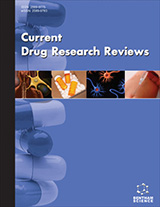
Abstract
Introduction: Indigestion leading to Flatulence is a common problem for infants, and tackling it is tedious for the parents. So, addressing the issue with an ideal formulation should likely have a combination of digestive enzymes and carminatives.
Methods: A formulation containing enzymes like Fungal Diastase (Amylase) and Papain (Protease) for the digestion of Carbohydrates and Protein, respectively, along with aromatic, volatile, carminative oils like Dill Oil, Anise Oil, and Caraway Oil can serve the purpose to mitigate problems associated with infant indigestion and flatulence with maximum compliance.
Results: The stability of multi-enzyme and analysis of carminative oil mixtures still need to be improved due to their inherent characteristics. Enzymes are very likely susceptible to changes in temperature and pH, while the solubility of carminative oils is minimal in the aqueous phase. Also, each enzyme is stable in different pH ranges. Nine emulsions were developed using a suitable buffer system and analyzed by HPLC method.
Conclusion: The optimum pH range was found, and analytical method validation was done for the method's accuracy, precision, and repeatability. The optimum pH was 6-6.5, and the active pharmaceutical ingredients (API) assay was found within the acceptable limit of NLT, 90% for enzymes and 90-110% for carminative oils.
Graphical Abstract
[http://dx.doi.org/10.1016/j.jand.2014.12.015] [PMID: 25721389]
[http://dx.doi.org/10.1136/bmj.323.7310.437] [PMID: 11520846]
[http://dx.doi.org/10.1007/s10989-021-10167-2]
[http://dx.doi.org/10.5402/2012/510795] [PMID: 22848853]
[http://dx.doi.org/10.4103/0973-7847.70915] [PMID: 22228959]
[http://dx.doi.org/10.1016/S0378-5173(02)00051-0] [PMID: 11955821]
[http://dx.doi.org/10.4274/tjps.galenos.2021.74150] [PMID: 34978401]
[http://dx.doi.org/10.1016/j.molliq.2022.119379]
[http://dx.doi.org/10.1016/j.meatsci.2022.108785] [PMID: 35278974]
[http://dx.doi.org/10.1016/j.addr.2012.09.018] [PMID: 11104900]
[http://dx.doi.org/10.1016/j.lwt.2021.112377]
[http://dx.doi.org/10.1016/j.heliyon.2022.e08974] [PMID: 35243093]
[PMID: 24799735]
[http://dx.doi.org/10.4103/0973-1296.66927] [PMID: 20931071]
[http://dx.doi.org/10.1186/s40543-015-0056-3]
[http://dx.doi.org/10.1155/2019/6143061] [PMID: 30984442]
[http://dx.doi.org/10.4172/pharmaceutical-sciences.1000217]
[PMID: 29404028]
[http://dx.doi.org/10.1007/s40005-016-0264-x]
[http://dx.doi.org/10.1002/ffj.2730070511]
[http://dx.doi.org/10.1002/ffj.2730020303]
[http://dx.doi.org/10.1002/jps.3030460615] [PMID: 13491402]
[http://dx.doi.org/10.1016/S0021-9673(97)00867-4] [PMID: 9468652]
























